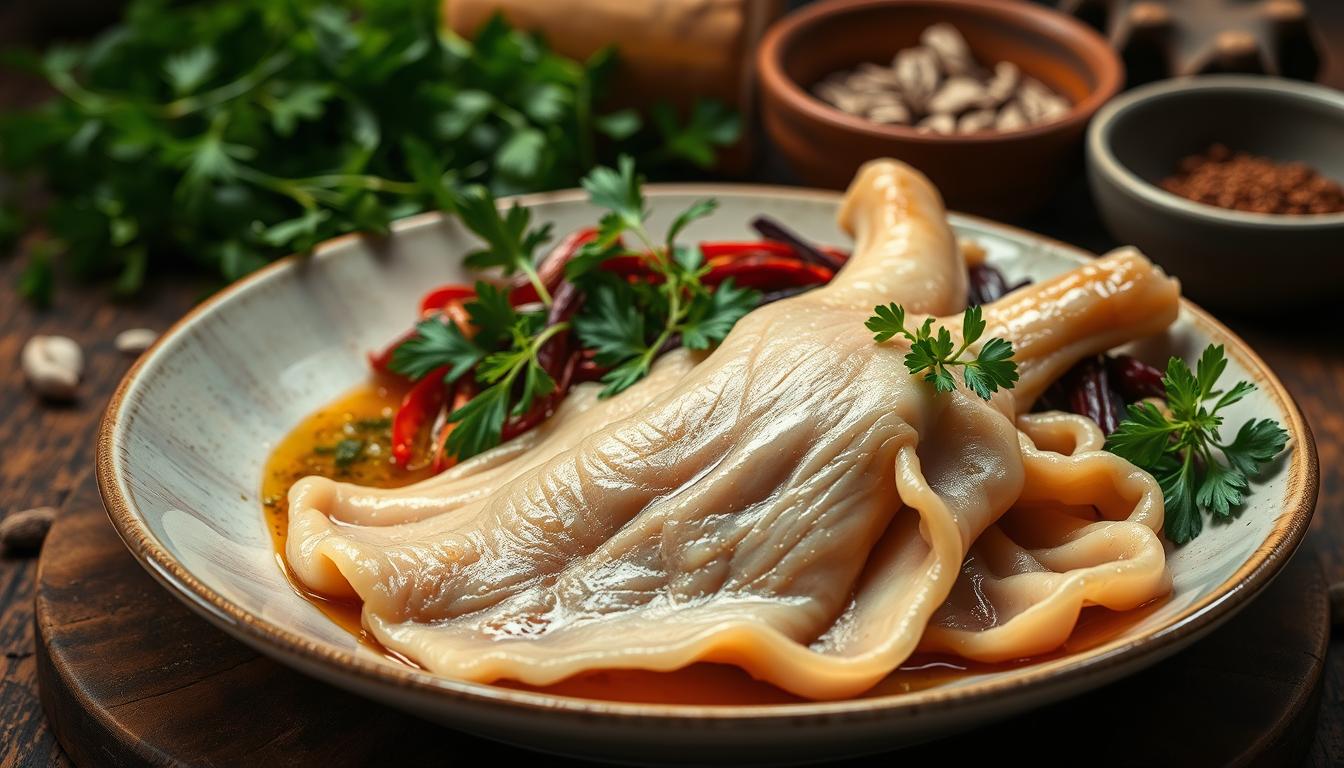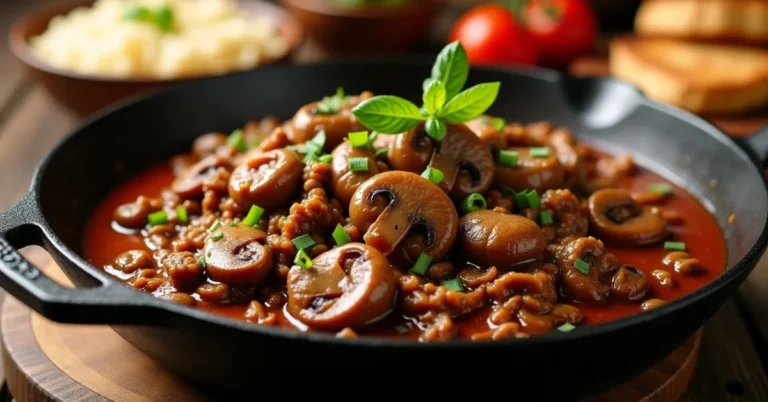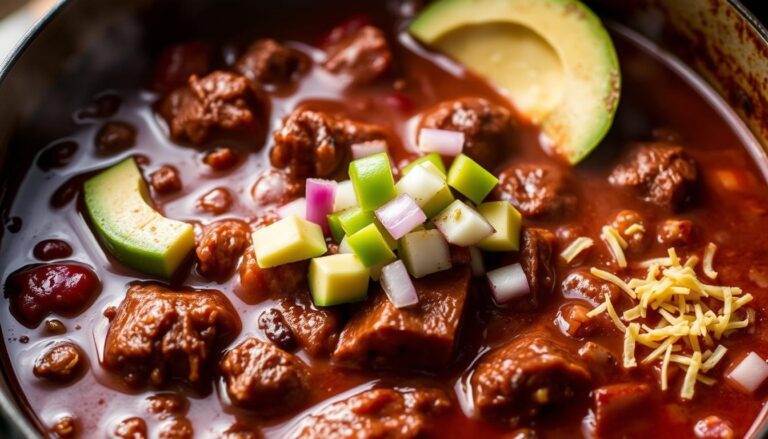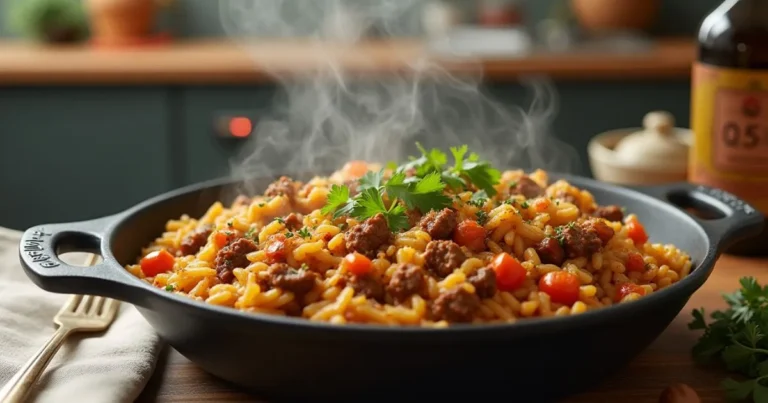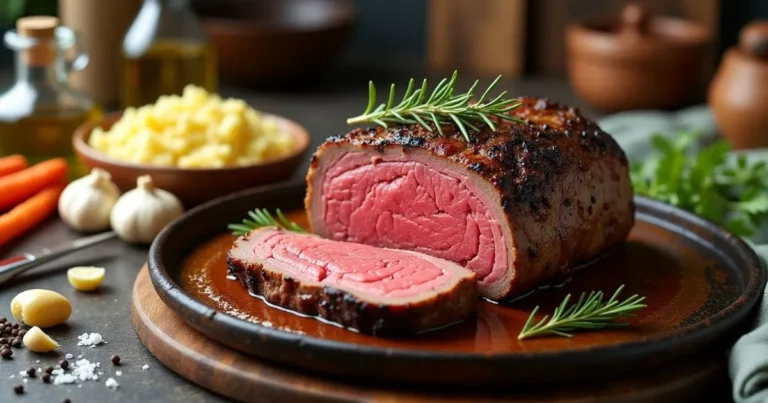Easy ways to make beef tripe tasty and tender
Ever wondered about those overlooked cuts of meat that chefs whisper about? Beef tripe, the humble beef stomach lining, is becoming a culinary star. Your taste buds are about to embark on an unexpected journey into a world where budget-friendly meets gourmet. With its rich flavor and unique texture, beef tripe is often featured in many traditional and modern dishes.
Nose-to-tail eating isn’t just a trend—it’s a culinary revolution. Beef tripe represents more than an ingredient; it’s a testament to resourceful cooking that respects every part of the animal. Each bite tells a story of tradition, sustainability, and extraordinary flavor waiting to be discovered.
As more diners seek out beef tripe for its sustainability and flavor, it has become a popular choice among chefs looking to highlight lesser-known ingredients.
Whether in a classic beef tripe soup or a gourmet tripe dish, this ingredient is proving its versatility and charm.
Adventurous home cooks and professional chefs alike are rediscovering this versatile ingredient. From street food to fine dining, beef tripe is proving that deliciousness knows no boundaries. Get ready to challenge your preconceptions about this remarkable cut of meat.
Key Takeaways
- A budget-friendly, nutrient-rich ingredient
- Nose-to-tail eating celebrates whole animal usage
- Tripe offers versatility across different cuisines
- Professional chefs are reimagining offal in modern cooking
- Sustainable eating includes utilizing all animal parts
Understanding Beef Tripe and Its Origins

A world of ethnic cuisine delicacies. It turns ordinary beef into culinary treasures. For centuries, it has been a staple in kitchens worldwide, offering nutrition and rich flavors.
Understanding how to cook beef tripe can elevate your home cooking and introduce you to new culinary adventures.
What is Beef Tripe?
The muscle lining from a cow’s stomach. It has a unique texture and flavor. Chefs and food lovers worldwide love it.
Many cultures have embraced beef tripe, finding innovative ways to incorporate it into their cuisines.
It comes from the cow’s four stomach compartments. Each type of tripe adds something special to dishes.
The unique qualities of beef tripe allow it to absorb flavors beautifully, making it a favorite among chefs.
Cooks appreciate the diverse applications of beef tripe in various recipes and culinary traditions.
Types
The four main types are:
- Rumen (Blanket) Tripe: Flat and smooth
- Honeycomb Tripe: Has a honeycomb-like pattern
- Omasum (Book) Tripe: Has a leafy texture
- Abomasum (Reed) Tripe: The smallest and rarest type
Historical Significance
Tripe has a long history in working-class cuisines. It’s found in French tripes à la mode de Caen and Spanish callos a la madrileña. Honeycomb tripe has made simple ingredients into unforgettable meals for many years.
Tripe is more than food—it shows culinary creativity and resourcefulness.
The Global Culinary Impact of Tripe Dishes
Tripe is a key ingredient in many cuisines around the world. It’s loved for its unique texture and flavor-absorbing qualities. This makes it a favorite in both street food and fancy restaurants.
With dishes like beef tripe stew and tripe tacos gaining popularity, the ingredient is truly undergoing a renaissance.
Let’s explore how tripe dishes are celebrated globally:
- Mexico: Menudo ingredients turn tripe into a famous hangover cure
- Italy: Trippa alla Romana is a beloved Roman dish
- Vietnam: Pho uses tripe as a main protein
- China: Dim sum offers tripe in tasty, small dishes
Tripe is also good for you. A 140-gram serving has 18 grams of protein and just 125 calories. It’s a lean and nutritious choice.
In many kitchens, beef tripe has become a staple, proving its worth beyond being just an offal.
| Cuisine | Signature Tripe Dish | Unique Preparation |
|---|---|---|
| Mexican | Menudo | Spicy soup with chili peppers |
| Italian | Trippa alla Romana | Slow-cooked with tomato sauce |
| Vietnamese | Pho | Broth-based noodle soup |
| Polish | Flaki | Hearty tripe stew |
Tripe’s journey around the world shows its amazing versatility. It’s a hit in both casual street food and upscale dining. This ingredient keeps surprising and pleasing food lovers everywhere.
Essential Preparation and Cooking Methods
Exploring beef stomach lining means learning special preparation techniques. These methods turn this unique ingredient into a tasty dish. Fans of nose-to-tail eating know that the right prep is crucial.
Cleaning and Pre-cooking Techniques
Getting beef tripe ready needs careful steps. The cleaning process is vital:
Chefs find that beef tripe elevates dishes, adding depth and character to traditional recipes.
From home kitchens to upscale restaurants, beef tripe continues to inspire culinary creativity.
- Rinse thoroughly under cold water
- Remove any visible fat or impurities
- Scrub with salt or vinegar to eliminate strong odors
- Parboil for 15-20 minutes to ensure thorough cleaning
Traditional Cooking Methods
Many cultures have perfected tripe cooking over time. Traditional ways include:
- Slow simmering in soups and stews
- Braising with aromatic herbs and spices
- Grilling for a crispy exterior
- Deep-frying for a crunchy texture
Modern Preparation Approaches
Today, chefs are finding new ways to cook tripe. Pressure cookers make it cook faster, making tripe more popular. Chefs also try marinades, sous-vide cooking, and new flavors to make tripe special.
Pro tip: Always cook tripe until it reaches a tender, melt-in-your-mouth consistency.
Whether you like traditional cooking or modern twists, learning to prepare beef tripe is exciting. It opens up new flavors in your kitchen.
Nutritional Benefits
Beef tripe is a nutritional powerhouse among beef byproducts. It has a unique organ meat profile that boosts your diet with essential nutrients. A 140-gram serving packs a nutritional punch, offering high-quality protein and low calories.
- Protein: 18 grams per serving (36% daily value)
- Calories: Only 125 per serving
- Minimal fat content: 5.4 grams total
Tripe is packed with critical micronutrients for health. It has an impressive mineral content, including:
| Nutrient | Amount per Serving |
|---|---|
| Calcium | 101 milligrams |
| Zinc | 2.07 milligrams |
| Selenium | 18.20 micrograms |
| Vitamin B12 | 1.53 micrograms |
Unique benefits of tripe in your diet include supporting bone health and boosting immunity. It also promotes digestive wellness. The high collagen content is great for healthy skin, bones, and joints.
Tripe is an exceptional nutrient-dense food. It turns organ meats into a nutritional powerhouse.
For those wanting to add variety to their protein sources, tripe is a lean, nutritious choice. It’s low in calories and high in protein, perfect for health-conscious individuals looking for nutritious meals.
From Street Food to Fine Dining: Tripe’s Culinary Renaissance
Tripe has gone from being a simple offal to a prized dish in modern cooking. The rise of nose-to-tail eating has helped make this ingredient famous. Chefs and food lovers now find new ways to enjoy ethnic cuisine delicacies.
Tripe’s journey shows its wide appeal in different cuisines. It’s a key part of Mexican street tacos and Vietnamese pho. Celebrities like Anthony Bourdain have made offal popular, welcoming tripe into adventurous dining.
Tripe is more than food; it’s about eating sustainably and being creative. Trying tripe opens up a world of deep flavors. It’s an exciting journey for your taste buds.
Adding beef tripe to your diet is not just about flavor; it’s also about exploring nutritious and sustainable options.
FAQ
What exactly is beef tripe?
Beef tripe is the lining of a cow’s stomach. It comes from the first three or four stomach chambers. It’s a part of the offal and is used in the nose-to-tail eating movement.
What are the different types of beef tripe?
There are four types of beef tripe. Blanket tripe comes from the first stomach. Honeycomb tripe, the most prized, comes from the second stomach. Book tripe and reed tripe come from the third and fourth stomachs, respectively.
Is tripe nutritionally beneficial?
Yes, beef tripe is very nutritious. It’s high in protein and low in fat. It also has selenium, vitamin B12, zinc, and iron. Plus, it has lots of collagen, which is good for skin, bones, and joints.
How do I properly clean and prepare tripe?
To clean tripe, wash it well to remove impurities. First, parboil it to get rid of bad smells. Then, blanch and remove fat or membrane before cooking it.
In what cuisines is tripe commonly used?
Tripe is used in many cuisines. In Mexico, it’s in menudo. In Italy, it’s in trippa alla Romana. In Vietnam and China, it’s in pho and dim sum, respectively. Each place has its own way of preparing it.
Is tripe considered a delicacy or a budget ingredient?
Tripe is both! It’s a cheap offal product but is now popular in fancy restaurants. Celebrity chefs have made it trendy in modern cooking.
How long does tripe take to cook?
Tripe needs slow cooking to be tender. Traditionally, it’s simmered for 2-4 hours. Pressure cookers can make it faster. The goal is to make it soft and tender.
Can I use tripe in different types of dishes?
Yes! Tripe is very versatile. It’s great in soups, stews, grilled, or fried. It fits well in Mexican tacos, Italian stews, and Asian dim sum, among others.
Have you tried this recipe yet? We’d love to hear how it turned out! 🍴
There are no reviews yet. Be the first one to write one.

